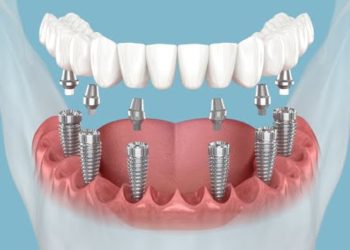If you’re lying in bed and suddenly feel itchy bites, there may be a serious issue which needs urgent attention – bed bugs. An infestation of these tiny critters can cause discomfort and a lack of a good night’s rest, but getting rid of them is the real challenge. Unfortunately, traditional methods often fail to eliminate these pests entirely. So, what’s the secret weapon? Heat treatment.
Bed Bugs: A Global Issue
Dreaded by homeowners worldwide, bed bugs are an unfortunate reality. Not limited to any particular region or climate, these nuisances thrive anywhere their human hosts reside. And they’re notoriously hard to eradicate; their resilience is often underappreciated.
Well-adapted to urban environments, they ruthlessly invade homes, apartments, hospitality establishments, public transit – practically any space humans inhabit. They expertly hitch a ride in luggage and clothing, silently spreading their infestation.
This widespread problem has given rise to multiple elimination methods like chemical treatments and fumigation. However, their high resistance to many pesticides often leads these treatments to failure.
Emailing pest control companies and hosting vacuum parties might temporarily diminish the population, but total eradication requires a powerful solution – like heat treatment.
Traits of Bed Bugs
To effectively combat bed bugs or Cimex Lectularius (latin), understanding their traits is paramount. These tiny annoying pests are masters of hide-and-seek. They’re predominantly nocturnal creatures and slip into our lives under the veil of darkness.
Their reddish-brown flat bodies enable them to creep into mattresses, box springs, carpets and furniture without detection. Their primary diet consists of human blood which they feast upon during our periods of rest.
Perhaps the most frustrating trait is their staggering reproductive rate. A female can lay between 200-400 eggs over her lifetime resulting in rapid infestations.
Furthermore, bed bugs are gifted with a high resistance to various pesticides, solidifying their reputation as formidable foes. Traditional treatment methods often prove ineffective in the face of bed bug’s impressive survival skills. But the heat treatment for bed bugs naturally offers a ray of hope.
Heat as A Bed Bug Solution
The one thing these tiny terrors can’t withstand is extreme heat. Bed bugs, at all life stages, die when exposed to temperatures above 45 degrees Celsius (113 degrees Fahrenheit).
Heat treatment for bed bugs naturally is a highly efficient solution. It involves introducing and circulating heated air in infested areas until it permeates walls, furniture, and every tiny crack where these parasites might hide.
This method kills adult bugs and their eggs, ensuring a thorough eradication. Also noteworthy, unlike traditional treatments that usually require multiple interventions, heat treatment eliminates bed bugs in a single visit.
Bonus point: it leaves no harmful residues post-treatment, which makes it an environmentally friendly alternative too.
Professional Heat Treatment
In most instances, professional heat treatments are the most reliable route because they have the capacity to attain high, lethal temperatures. These specialists use state-of-the-art equipment to generate controlled heated air and monitor real-time temperatures. This provides an even heat distribution that assures complete extermination.
A key advantage is the minimal disruption it causes. You’re spared of packing up or covering your belongings since the process is chemical-free – unlike fumigation or pesticides that require extensive preparation and post-treatment cleaning.
Additionally, professional services offer post-treatment guidance, which includes proactive measures to prevent future re-infestations.
Yes, professional treatments are an investment. But considering the peace of mind and guaranteed results, it raises questions about the worth of cheaper, less effective treatments.
Diy Heat Treatment
Opting for DIY heat treatment? Note this: accurately reaching and maintaining lethal temperatures is essential. Failing to do so could conveniently provide a warm environment for bugs to thrive. Also, unintentional overheating can cause severe property damage.
Several DIY options are available like bed bug heaters or heating encasements; however, they primarily treat isolated infestations. They might be suitable for treating luggage after travel or small pieces of furniture but are limited when dealing with a house-wide infestation.
DIY methods must be conducted with extreme diligence. Regularly check temperature levels using thermometers and place additional fans to circulate the heat evenly.
In conclusion, while professional services provide a thorough, stress-free solution, DIY methods can also be considered based on the extent and severity of infestation. Remember – these tiny nocturnal creatures may be persistent, but they’re not invincible against the power of heat!
Preparation for Heat Treatment
You may wonder, “What needs to happen before the application of heat treatment?” Interestingly, preparation is straightforward. Unlike with chemical treatments or fumigation, there’s no need to cover your belongings or leave the premises.
However, certain precautions should be taken to ensure a seamless procedure. For instance, combustible items, such as aerosol cans and oil-based paintings must be removed. Also, delicate belongings that may warp from the heat, like vinyl records and plastic items, should also be relocated.
It’s also important to note that electronics should be unplugged. This might seem inconvenient but is done in the interest of safety. FLIR (Forward-Looking Infrared) cameras can then be used by professionals to monitor temperatures during treatment and protect these delicate items. An abbreviation for Forward-Looking Infrared, FLIR cameras are thermal imaging systems used often in heat treatment procedures.
Before proceeding with this exercise, your pest management professional (abbreviated as PMP) will provide you with a list detailing instructions for pre-treatment steps. Following these instructions carefully ensures that heat can permeate effectively without causing damage to possessions.
Risks and Limitations of Heat Treatment
While heat treatment for bed bugs has notable benefits, one should stay informed about potential risks and limitations as well. Uncontrolled heating could lead to property damage so it’s crucial that the procedure is professionally handled and monitored at all times.
Another concern lies in the fact that heat doesn’t penetrate every material with equal efficiency. This could potentially leave some hideouts untreated if temperatures don’t reach high enough in certain areas. These spots typically include deeply cluttered spaces or objects composed of thick materials which limit air flow.
In turn, while experts precariously balance temperatures to ensure lethal levels for bed bugs yet avoiding damage to possessions, there are instances where damage may occur. Although rare, potential damage should be considered. Possible heat damage can include melted plastics or delicate fabrics and occasionally, warped or damaged electronic devices.
Lastly, remember that effective heat treatment requires a professional touch. Unsupervised and unguided attempts, despite good intentions, can end up being a risk rather than resolution.
Alternatives to Heat Treatment
If for any reason the heat treatment is not your preferred solution, there are other methods to consider with some being more effective and expensive than others.
- Chemical treatments are commonly used but bear in mind that C. Lectularius displays strong resistance to many pesticides.
- Non-chemical methods like vacuuming, encasements, steam cleaning, and cold treatments also exist; each having its own effectiveness level depending upon infestation severity.
- In certain cases, Integrated Pest Management (IPM) tactics combining chemical and non-chemical treatments might be used for comprehensive control.
However, while alternatives can work well under proper execution, they typically require multiple applications over a period of time. In addition, the list doesn’t cover all possibilities and it’s important to always consult a PMP for your unique situation.
Maintenance after Heat Treatment
Maintaining an environment free from bed bugs post-treatment requires vigilance. There are a few steps you can adopt which will help keep bed bugs away post heat treatment.
- Regularly inspect your home especially when returning from travel.
- Avoid clutter as it provides excellent hiding spaces for these nocturnal visitors.
- Keep your bedroom clean including periodic vacuuming of mattresses and heating items that cannot be laundered.
- Lastly, the use of high-quality bed bug proof mattress and box spring encasements will help identify if these pests reappear.
Post-treatment, your PMP will provide expert advice on preventing future infestations. Closely adhering to these preventive measures will extend the efficacy of the heat treatment considerably.
Cost-Benefit Analysis of Heat Treatment
You must be conscious about costs and it’s natural to do a comparative analysis before choosing an extermination method. Compared to repeated chemical or non-chemical treatments, a professional heat treatment may seem pricey initially. However, factor in its effectiveness in completely annihilating the infestation in a single visit along with the side benefits like no packing or relocation of belongings; it suddenly seems like a worthy investment.
Moreover, consider the cumulative costs of medical treatments resulting from long-term bed bug bites, and investing in heat treatment starts making even more sense. A critical comparison of costs coupled with benefits reflects heat treatment as a true winner in numerous scenarios.
It’s also crucial to remember that like all services, prices vary based on location, severity of infection and company expertise. Always obtain multiple quotes from service providers and make a well-informed decision.
The Final Verdict
Bed bugs are not just an annoyance but a potential health hazard as well. While smaller infestations could be controlled with DIY methods, professionals are preferred for a house-wide outbreak. Thermal treatment, though it may have some limitations and risks associated with it, emerges as an effective solution due to its ability to exterminate bed bugs at all life stages simultaneously – something alternative methods struggle with. Therefore, though seemingly expensive, the benefits often outweigh the cost, rendering it an investment worth considering.











































































